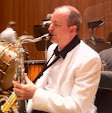My solution to the problem involves a group of interactive clarinet fingering charts, some of which have sound and some of which present alternate fingerings. I created them using Flash, which is one of my favorite software programs. Once you understand the basics of working with Flash, the sky is the limit. It offers great graphics capabilities and endless opportunities for interactivity.

All of the fingering charts feature a photo of a clarinet which is far easier for students to understand than the diagrams of the traditional charts. The user points to a note on the staff and the appropriate fingering shows up on the picture of the clarinet. If you’re not sure whether or not you are using the correct fingering, you can use the clarinet chart with sound to check yourself. There is a fingering chart with sound for the lower register and one for the upper register.
There are also two fingering charts that show alternate fingerings for the lower register and upper register. They are helpful for students who need to learn the chromatic fingerings and trill fingerings for awkward passages of music.
Since putting these clarinet fingering charts online, I have not heard a single student say that they can’t figure out what a note is. They are learning notes more quickly and efficiently and having fun, too. Hopefully, clarinetists everywhere will find it useful.
